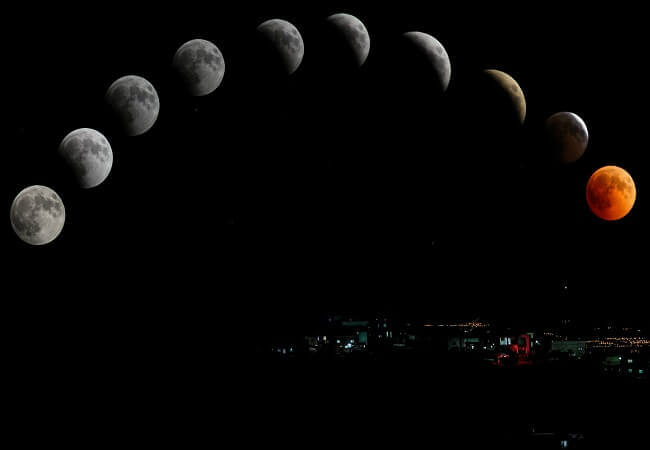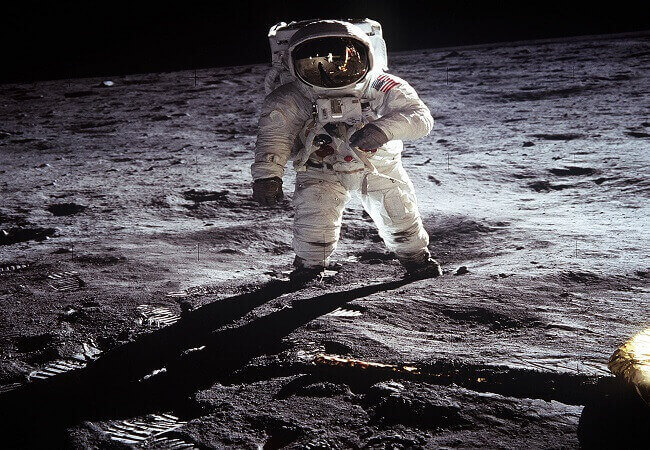
This year Apollo 11 Space Mission will celebrate its 50th anniversary after the first moon landing took place on 16 July 1969. This year the partial lunar eclipse 2019 also known as Chandra Grahan will take place on the long night of July 16 and July 17, 2019. A partial lunar eclipse takes place when the Earth overshadows only a smaller section of the lunar surface.
This year also witnessed a lunar eclipse taking place on Jan 21, 2019. January month witnessed a supermoon, also known as the wolf moon. The “supermoon” implied the typical red colour of the moon during the time of the eclipse.
It all started from 500 B.C.E when people gradually understand different phases of the moon. T With its gleaming light, it spreads its light even in the darkest hours. During the stone age, 2.5 million years ago, there were a lot of ancient civilizations in Babylonia, China and Greece. They took a deep interest in unfolding the celestial events and discovering the phases of the planetary positions.
Their writings about the astronomical happenings taking place gave a lot of evidence in interpreting the position of the planets. Back in 500 B.C.E. ancient civilizations typically made predictions about why different phases of the moon take place.
A lunar eclipse also known as Chandra Grahan takes place when earth overshadows the moonlight and blocks the sunlight falling on the moon. Throughout ages, there have been several mythological tales surrounding the lunar eclipse. A lunar eclipse is also known as the blood moon, due to its transition in several phases. Moon can also appear to be reddish due to the sun’s light falling on it from around the edges of the Earth.

A lunar eclipse only takes place when a full moon is there. Full lunar eclipse only takes place when Sun, Earth and Moon are equally lined up in a horizontal line. When the lunar eclipse takes place, the colour composition of the moon turns deep red due to the light emitted from the Earth’s atmosphere. When they are not properly aligned, a partial lunar eclipse takes place. Types of lunar eclipses are-
Moon’s phases are outlined by the two distinct shadows falling from the Earth. One is Umra, i.e., a dark shadow and the other one penumbra, i.e., partial outer shadow. Ever since the formation of the moon took place around 4.5 billion years ago. It has been stepping inches away from our planet. This alignment provides Earth with the ability to outcast its shadow on the moon and paving way for a lunar eclipse.
The first lunar mission took place on 16 July 1969. With flight commander Neil Armstrong, becoming the first man to ever step upon the lunar surface. Along with pilot Michael Collins and Lunar Module Pilot Edwin Buzz Aldrin. This year 16 July 2019, marks 50 years anniversary to the first lunar mission, Apollo 11.
Armstrong and Aldrin made history when they become the first-ever human to step on a planetary body other than Earth. With massive success in the mission, it also made a benchmark to be the first logistical and engineering achievement on the moon. With Apollo 11’s 50th year anniversary, there will be celebrations taking place allover the world. Worldwide celebrations will take place since this today, 16 July lunar eclipse collides with the Apollo 11 mission which took place 50 years ago.
Many of us are raised by hearing ancient mythological tales where we are taught while the eclipse take place, we should not look at the moon. However, NASA scientists have cleared all the rumors and said that its very much safe to look at the moon. Today, the lunar eclipse will be visible from
Lunar Eclipse 2019, will be visible from various parts of the world-
The lunar eclipse will start at midnight 1:31 am on Wednesday 17 July. According to the latest reports, lunar surface will appear to be dark grey or red. During this phase,moon will be covered by the 65% of Earth’s umbral shadow at a maximum eclipse.
There will also be live streaming of the lunar eclipse taking place from Rome at 1:30 am from the Virtual Telescope Project. Tonight’s lunar eclipse will last for 3 hours.
With today,16th July, 2019, lunar eclipse, we will witness the last lunar eclipse taking place this year. According to NASA, Earth will witness an approximate of 228 lunar eclipses taking place in the 21st century. The coming years will witness the penumbral phases of the moon on the following predicted dates-
You might also like to read about Apollo Turning 50 This July to learn more about the first lunar mission.
2,395
2,395




Choose your and your partner's zodiac sign to check compatibility